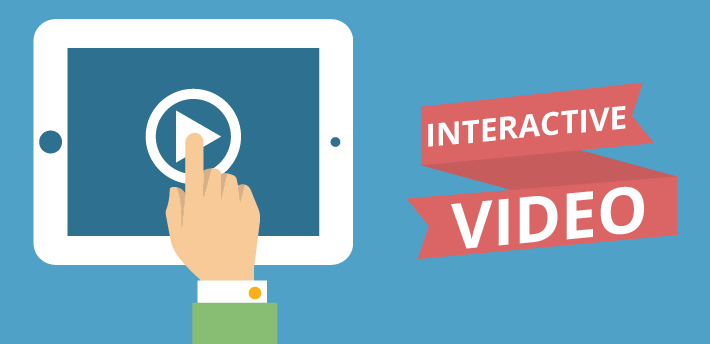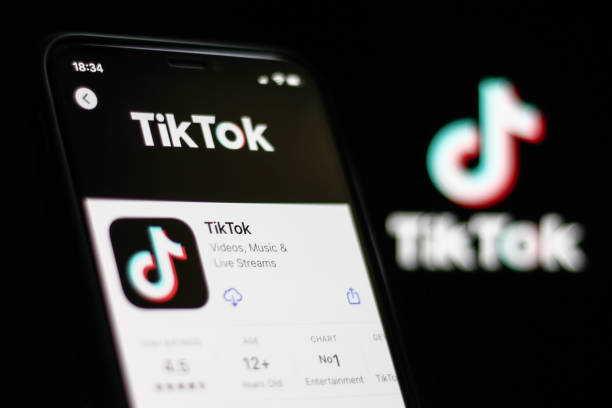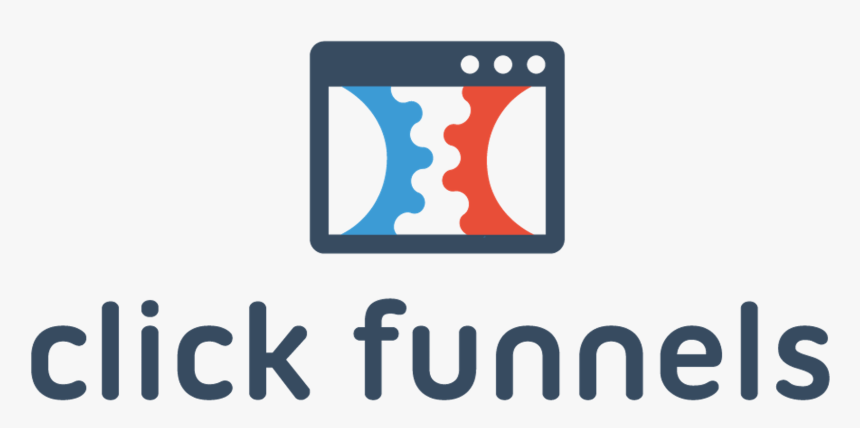
You want your conversion rates to be more excellent as an eCommerce owner and decision-maker. What is your process, then?
By enhancing your eCommerce funnels.
Over 43.8 percent of people who visit an eCommerce site see a product page, yet just 3.3 percent complete a purchase.
According to a different survey, the typical conversion rate for eCommerce websites is between 1 and 2 percent.
This post will define an eCommerce sales or conversion funnel and explain how to make your eCommerce store more conversion-friendly.
What is an eCommerce sales funnel?

An eCommerce sales funnel, to put it simply, is a visual depiction of your client’s journey. Customers begin at the top of the sales funnel and work their way down, one step at a time until they (ideally) become repeat customers.
Some customers move swiftly through the funnel, from a lead to a loyalist in the blink of an eye. They see something they like, purchase it, and then start advocating for the company. Compared to three-toed sloths, other customers take months or even years to complete their purchase.
So, what market should you aim for? Both are very important. If you properly design your sales funnel, it will serve as an efficient channel for hasty decision-makers and procrastinators.
Although each company has its sales funnel, the fundamental structure of the pipeline is the same for all of them. Your sales funnel will probably be relatively brief if you sell low-priced goods (such as cosmetics, clothing, toys, or pet supplies). Why? This price won’t be a deterrent to buying. Your sales funnel will probably be longer if you are in the luxury market (luxury watches, pricey jewelry, cutting-edge technology, or cars).
The benefit of eCommerce Funnels
It’s critical to comprehend the idea of an eCommerce sales funnel since it provides a helpful model for understanding the client journey from awareness through conversion. The sales funnel is a valuable framework for examining your company and pinpointing development opportunities.
An eCommerce site, for instance, may model its visitors as a funnel and discover a significant decline in users between visits to the shopping basket and actual purchase completion. Using this information, the business may hypothesize why this is the case and explore options for increasing conversion rate, like lowering form fields, building rapport with sales, emphasizing CTAs, or promoting limited-time deals.
The business may try to lower the cart abandonment rate and raise the proportion of site visitors who complete the funnel by putting these concepts through controlled A/B tests.
Stages of an Ecommerce Sales Funnel
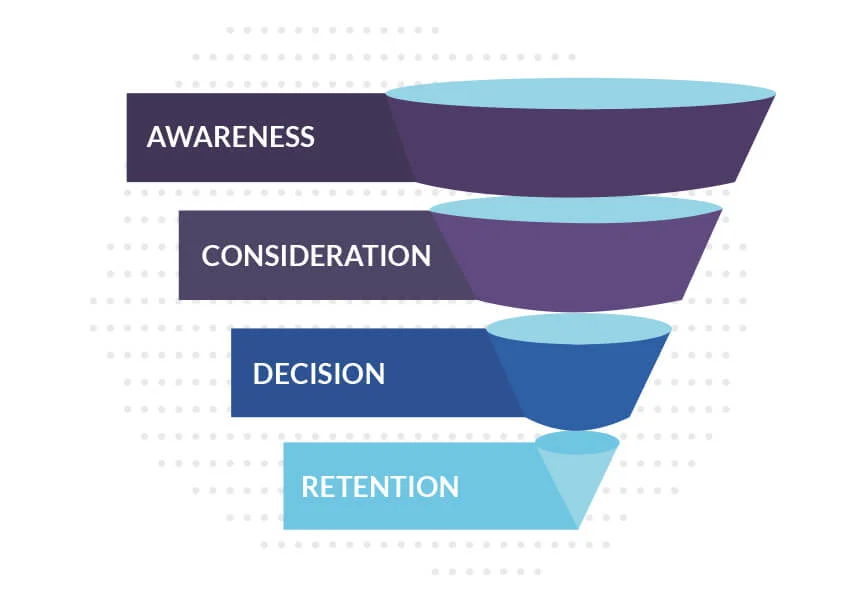
The buyer’s journey is divided into four phases, each of which is represented by a stage in the eCommerce sales funnel, and they are:
Discovery and awareness stage, which is at the top of the sales funnel
Interest and purchase consideration which is in the middle
Decision and conversion stage, which is at the bottom
Retention and loyalty stage, which is at the post-funnel phase
You can employ several strategies for each step to bring your leads down the funnel.
Discovery And Awareness Stage
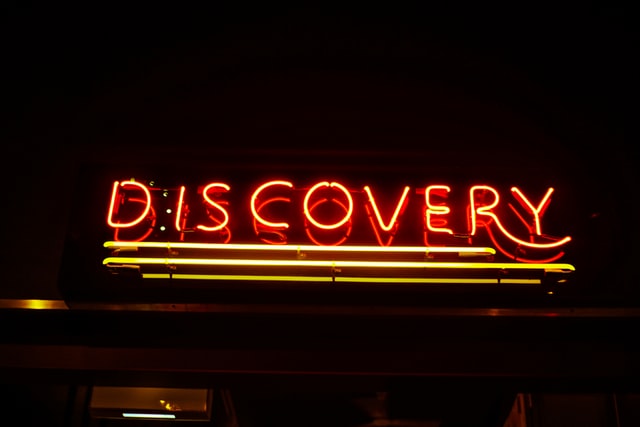
Users first get familiar with your brand and the products or services you provide at the very top of the funnel, often known as the commencement of the customer journey.
They found out about your company via various mediums such as online advertisements, personal recommendations, word-of-mouth, social media postings, backlinks, and many more.
They also have challenges and pain points that they need to address and determine whether or not your company can assist them.
Because of this, you must explain what your company is all about and give tools and information to educate the prospects at this sales funnel step.
You should use the following content marketing strategies on your eCommerce website to educate site visitors at this point of the customer journey, and sales funnel:
– Blog articles
– Webinars
– Videos
– Guides
Recommended strategies to use in the awareness stage of the sales funnel:
Write captivating, valuable blog posts. eCommerce companies don’t often have blogs, which is odd considering that blogs are pretty effective at educating leads and enhancing SEO.
To highlight advantages over features, use concise, direct writing. A prospective customer wants to know what your items can accomplish for them at this stage of their purchasing process. Write extremely succinct, plain text for your product and landing pages that emphasizes your service’s advantages to the consumer.
Using videos Videos have a lot of persuasive power. OptinMonster reports that 87 percent of video marketers said their content helped drive more website visitors. When feasible, include videos of the product in use to provide your audience with a much-needed learning resource. The majority of consumers will prefer to watch a video than read a text.
Interest/Consideration Stage

You may claim to have a pool of prospects who are already aware of your eStore and comprehend its product offerings when your eCommerce firm succeeds in acquiring targeted and high-value visits to its online shop via organic and paid channels.
These people, who did not exit the sales funnel at the initial step, are probably curious about your online store, perusing your product pages, and contemplating purchasing from you.
At this level, the objective is to get these prospects to add a product to their wishlist or shopping cart so that they may proceed to the next stage of the funnel.
By using these kinds of content marketing, you may eliminate any last-minute skepticism your visitors may have:
– Client testimonials
– Product case studies
– In-depth product descriptions
– Product demo videos
Additionally, you may use email campaigns to advertise your unique offers to your email subscribers and influence them with persuasive language.
Strategies that are advised for the sales funnel’s consideration stage include:
Utilize social evidence.
According to research, 89% of consumers examine internet reviews before buying. Reviews and testimonials that provide social proof provide your consumers the assurance they need to make a purchase choice.
Improve your product pages.
Conversion-boosting product pages are essential. Your product page copy should align with frequently asked questions on the page to maximize them. Conduct a keyword study to learn what your customers are looking for and to improve the pages’ SEO. Include standardized pertinent components and information like:
– Product type/category
– Name of product
– Product description
– Calls-to-action
– Product description
– Shipping and return information
Decision/Conversion Stage
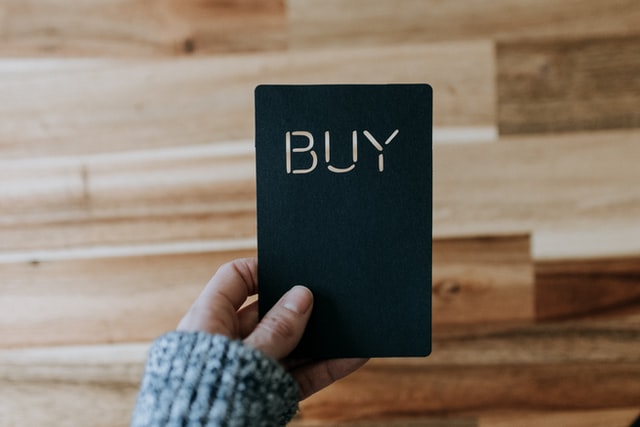
The user journey’s choice or conversion stage is located at the base of the eCommerce sales funnel.
It’s time to push your prospects one more time in the direction of conversion after engaging their interest in your eStore and persuading them to act in the previous phase.
The following strategies are suggested for the sales funnel’s decision/conversion stage:
Offer consumers a reason to purchase while checking out:
A checkout page should be distraction-free. It must include several payment alternatives and a clear call to action (such as a “check out” button). Additionally, offering additional incentives like free delivery and stipulating explicit money-back guarantees may be what ultimately convinces many customers.
Utilize exit-intent popups:
When a user moves their mouse toward the exit button or a new tab, popup alerts known as “exit-intent popups” will show. These popups aim to entice the user to finish the transaction by providing last-minute discounts and other benefits.
Email marketing for cart abandonment:
The average percentage of cart abandonment across all sectors is approximately 70%! Emails with behavior-based subject lines are a powerful content technique for influencing purchasers’ choices. For example, highly-targeted emails might encourage consumers to finish a purchase by providing a discount or by simply reminding them of the advantages of the product they have abandoned.
Retention/Loyalty Stage

The last phase of the conversion funnel is to develop the connection with the new consumer into loyalty and advocacy, therefore raising their lifetime value.
The following are examples of customer retention strategies:
– Customized customer service
– Additional benefits
– Bonuses for referring friends
– Exclusive sneak peeks at new items
– Newsletters with special content
The following strategies are advised for the sales funnel’s retention and loyalty stage.
Make use of the impact of a thank-you page:
Even though it’s the last page the customer visits, a well-done thank-you page may boost your revenues even more via upsell and cross-sell opportunities. A Thank You page, or a follow-up Thank You email may provide customers a cause to come back to your eStore and make another purchase after they’ve completed a transaction. Depending on the goals of the conversion, thank you pages may also request recommendations or perform a survey.
Loyalty plan:
A consumer will always return if they feel valued and unique, which loyalty plans generate. After confirmation of a successful transaction, you may put in place a time-triggered campaign to advertise loyalty benefits to potential new clients.
Referrals:
The secret to effective referral marketing is to give current customers an incentive, such as a discount on the next purchase, a shop credit, free samples, or gift cards, for referring their friends to your eShop. These benefits will make satisfied clients thankful and encourage them to recommend your company to others.
How to Improve the eCommerce Sales Funnel for your Website
Now let’s discuss strategy. Increasing the number of leads driven to, engaged with, and converted by your website may be accomplished by following these steps:
Understand Your Buyer Journey

You may visualize your user journey using Google Analytics’ user flow and other information.
You should ascertain what your customers do when they enter your eStore, their origin, and their actions after they leave.
Try responding to these questions to get a deeper understanding of your buyers’ journey:
Which referring websites send the most worthwhile visitors to your website?
How many visits to your website does the typical buyer make before buying a product?
When visitors initially land on your site, do they act differently than when they arrive immediately at one of the product pages?
Make Sure It Is Easy To Navigate Your eStore

From the time they first join your conversion funnel and become familiar with your brand until they finally convert, your prospects need to have a very defined path to follow.
Avoiding a complex layout and challenging navigation may give them an excellent user experience. It doesn’t matter where a user lands on your website; ensure a clear, logical path to every product category and every product page.
Any time a visitor’s experience is subpar, they will leave your eStore at any point in the funnel. Make an effort to pinpoint and strengthen your eStore’s navigational weak points.
You can improve your navigation by doing the following:
Breadcrumbs that will guide people to their current location on your website
You should separate product categories, but you shouldn’t have too many of them to overwhelm visitors.
A search query with auto-suggests and product items to display immediately in a drop-down menu is used when a user searches for something.
Establish the Type of Content for Every Stage and the Conversion Hooks

You should develop a strategy for guiding customers through all four phases of the eCommerce funnel: awareness, interest/consideration, decision/conversion, and loyalty/retention, as we’ve previously mentioned when describing every one of the stages.
Establish in advance the kind of content you intend to utilize at each step and on the sites that prospect access.
Remember that these are not limited to on-site content; email marketing and remarketing advertisements targeting people who have previously browsed your shop’s merchandise are also incredibly successful eCommerce marketing techniques.
Create A Lead Nurturing Approach

Visitors often turn into eCommerce leads by subscribing to newsletters and providing their personal information, like email addresses.
You require a lead nurturing plan to move leads from awareness to interest to conversion once you’ve captured them.
This nurturing technique entails providing your email subscriber leads with material created to address every step of the journey they could experience.
Your leads are given an offer via this material that they may take, and the more alluring the proposition is, the more challenging it would be for them to refuse it.
Make a list of your reward suggestions, compare them to one another, and think about which would be the best in a specific situation or for a particular client at a certain point of their journey.
In this respect, you may use various lead nurturing techniques like:
– Creating engaging content, persuasive language, and high-quality videos and pictures can provide your customer value.
– Improve the SEO of your sales pages.
– Utilize retargeting advertising and search
– Offer perks like price cuts, promo coupons, and shop credit
– Strategically use customized email marketing methods
– Use live chat support to get in touch with your customers swiftly.
Optimize Your Primary And Product Pages
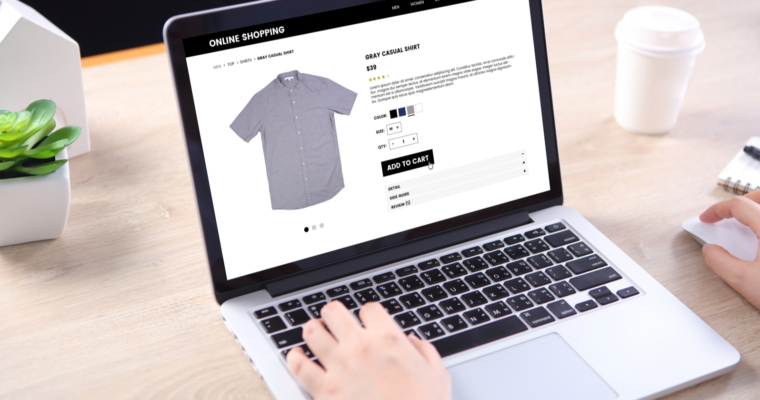
eCommerce websites must have a homepage, product pages, and category pages. It will be challenging to determine which “main” page is more significant as you sell more goods since there will be more of them.
You should focus on improving each site as they might serve as landing pages for your prospects and leads.
For Google to direct traffic your way, you must consider the SEO of each page, including its title tags, keywords, meta descriptions, and keyword density in the title/description of the product and picture alt title tags.
Additionally, you must change the material on each page to create the best user experience by keeping them uncluttered, utilizing just the necessary language, and formatting it with plenty of bullet points and brief paragraphs to provide consumers with value and explanations.
Keep in mind that a user action has to be prompted at every level of the conversion funnel. For this reason, in addition to specifying what you want the action to take, you also need to take precautions to prevent user distraction on the page.
Optimize Your Forms

Capturing leads is the first step in improving your conversion rates. Online forms, like the ones used to gather email subscribers, are often used for this.
If consumers get discouraged by filling out your forms, you can miss out on high-quality leads. eCommerce websites must have as few form fields as feasible since less friction results from fewer fields.
Ensure that the information requested on your form submissions is minimal and necessary. Make such options optional since users are reluctant to provide information like their location or phone number.
Optimize Your Checkout Pages

Finally, you must consider your checkout pages as unique and independent entities. Although we have previously spoken about optimizing product and category pages, this is entirely unrelated.
Generally, cart abandonment rates are relatively high. The greater they are, the more strongly this suggests that customers find anything annoying, distracting, or unpleasant about your checkout procedure.
If you’re unsure of what that may be, you might ask your consumers directly via an online poll what they don’t love about your checkout page. You may fill in your responses or give them the necessary answers to check.
You may also use the following guidelines for optimizing checkout pages:
– Use a single-page checkout wherever feasible rather than a multi-step process that could appear overwhelming to most customers. Employ crumbs and other progress markers to indicate how many steps are still needed to finish the process if you can’t eliminate the multi-step process.
– Provide as many payment options as you can.
– Make the page as uncluttered and distraction-free as feasible.
– Take into account making user registration optional.
– Provide evidence of the security of transactions to ease any worries among customers.
Key KPIs For Conversion Funnel Optimization
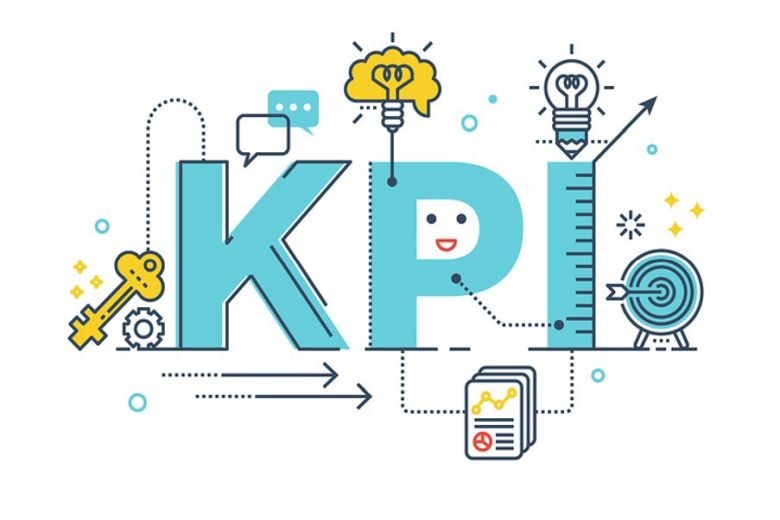
If you don’t track the effectiveness of your sales funnel, you can’t improve your eCommerce conversion rates.
To achieve this, you need to decide on the KPIs that will inform you how well your optimizations are working.
There are many KPIs, but some are more crucial than others for assessing the effectiveness of conversion funnels.
These KPIs include:
Traffic
Traffic is a crucial performance index that reflects all visitors to your website, without whom you wouldn’t have leads, prospects, or customers. Social networking sites, search engines, paid advertisements, and other outlets may generate traffic. The main goal in getting more leads is increasing traffic. Based on where you get the most of your traffic, focus your marketing efforts there. For instance, if search engines account for a large portion of traffic, devote time and resources to excellent SEO.
Bounce rate
This KPI reveals the proportion of visitors to your eStore who abandon the website immediately after arriving at one of your pages. You may lower these unfavorable rates by offering consumers more significant incentives to visit other pages. Add several internal connections, eye-catching content, and calls to action for different offers.
Cart abandonment
The statistic of how often visitors add things to their shopping carts before abandoning them should be part of your site’s analytics. You should use the optimization strategies we’ve covered above since high abandonment rates indicate a problem with your checkout procedure.
Sales
A crucial indicator since, while having high traffic, an eCommerce website may only have a tiny number of actual customers. To ensure an increase in sales for your eCommerce firm, concentrate on the action stage of the eCommerce sales funnel
Conversion rate
High conversion rates indicate that your audience is interested in your offerings. Conversions may be lead magnets that persuade people to join your email list or gather discount coupons, so they don’t always have to be the same as purchases.
Conclusion
One of the most vital things you can do for your company is to improve your eCommerce sales funnel. Your prospective clients will have to go through these phases in their buyer’s journey regardless of your company’s offerings.
The process of building your sales funnel is continual and subject to constant change, but it is time well spent. Your company’s revenues will soar thanks to an efficient eCommerce sales funnel, accelerating overall growth significantly. Significant outcomes are in store for your company if you optimize it correctly and foster a culture that constantly seeks to improve the funnel for your clients
RELATED: Sales Funnel: Definition, Process, Stages, and Examples
You love this Article right? Get more Updates via Adilo Twitter Page.
https://www.smallbusinessbonfire.com/ecommerce-sales-funnel/
https://articles.connectnigeria.com/how-ecommerce-using-social-media-platforms-is-creating-a-market-for-online-shoppers-and-vendors/
https://dealavo.com/en/sales-funnel-in-e-commerce/
https://www.digitalmarketing.org/blog/understanding-the-buyers-journey
https://www.wallpaperflare.com/photo-of-person-typing-on-macbook-pro-laptop-hand-screen-coffee-wallpaper-zuasy
https://www.ikonerx.com/2018/10/the-8-benefits-of-how-to-content-in.html
https://www.becomealocalleader.com/lead-generation/lead-nurturing-ideas-realtors/
https://www.searchenginejournal.com/ecommerce-product-page-seo-dos-donts/386068/#close
https://www.websiteplanet.com/blog/best-form-builders-wordpress/
https://dribbble.com/shots/6457374-Checkout-Page
https://hrleaders.net/what-is-a-kpi/




